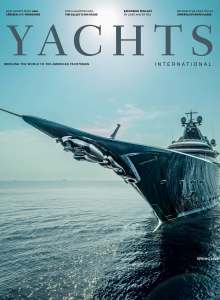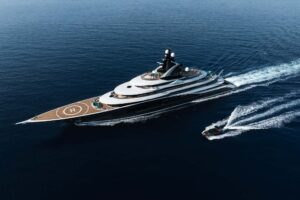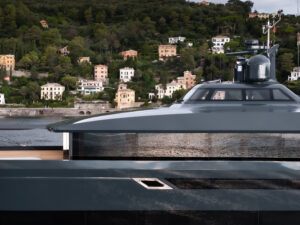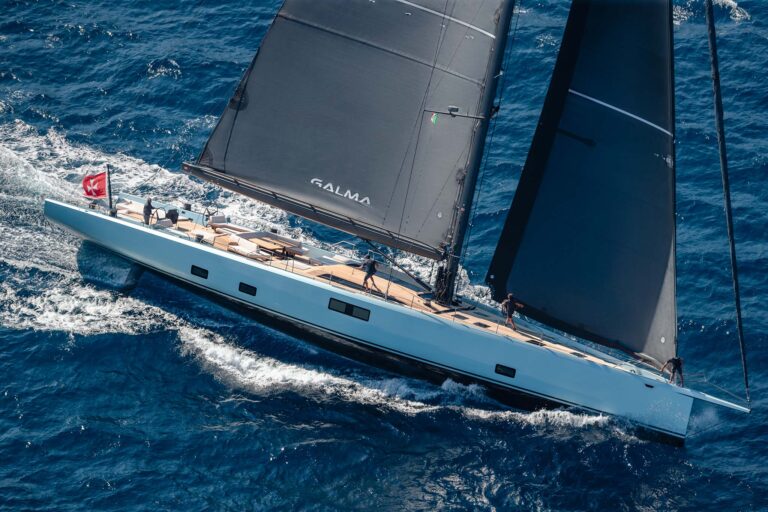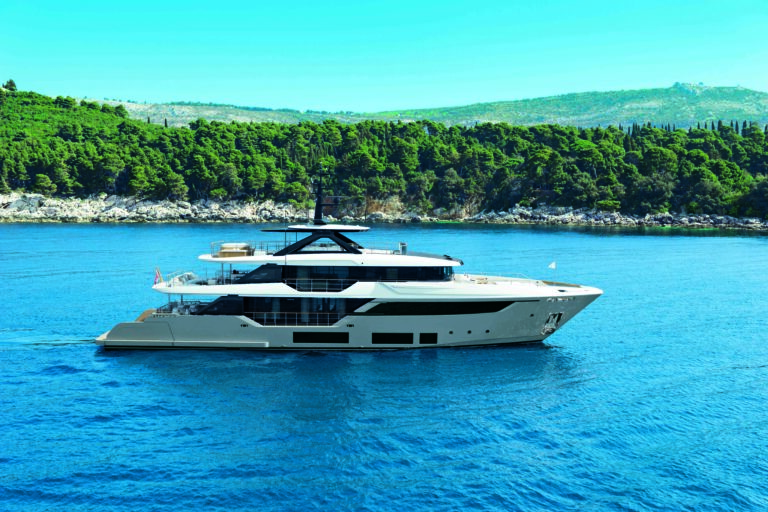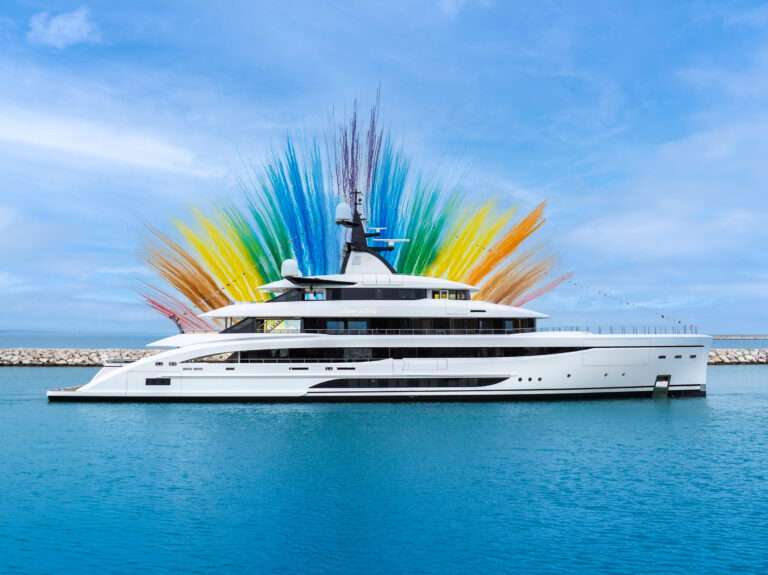Story Cecile Gauert + Images Starck Network
Philippe Starck at the other end of the phone line sounds positively cheerful. And why wouldn’t he be? He’s in Southwest France on his oyster farm and it’s a sunny if chilly November day. He describes the scene in front of him: There are waves whipping the shore and a biting breeze, but he is looking forward to a boat trip and picnic with his wife, Jasmine. “In about half an hour, I will be completely wet and loving it!”

A boat lover from a young age, this superstar and prolific designer usually lives on a boat or near the water where he can easily hop onto one of seven craft of all persuasions that he owns. Surprisingly, though the ocean is central to his life, he has only designed a handful of boats and yachts to date.
“Designing yachts is not my vocation,” he says. “I do it when I meet an interesting partner, or a client with a project that will present a challenge.” Several such meetings have yielded memorable projects and results over the past few years.
His latest creation in the yacht world is Venus, a high-profile vessel that Feadship recently delivered to her owners. Love it or hate it, just like the Starck-designed Blohm & Voss A, this yacht will not leave anyone indifferent.
Starck agreed to discuss Venus with us, but will not mention by name the extraordinary person who commissioned it. “I believe we have an understanding,” Starck says. “Let’s not use any names.”
“I did not know the owner of Venus,” says Starck, who first met the owner by phone. Starck answered his call in Paris in early 2007 on his way to catch a flight to Milan. Wearing his bike helmet and on his way out the door, there was no time for an involved conversation. The second time they spoke, as Starck recalls it, was in person. That’s when he found out that the person who dreamed of Venus had fallen in love with Virtuelle, a 79-foot sailboat Starck had designed nearly 10 years earlier.

Launched in 1999, Virtuelle has a minimalist teak deck suggesting waves. But, while enamored with that sailing yacht and its minimalist design, Venus’ owner was clear that he wanted to build a motoryacht. He gave Starck the size (78 meters or about 256 feet) and the number of cabins (six), and that was that.
“The owner told me to design the kind of yacht I would for myself,” Starck says. “He had done a tremendous amount of research, and when he reached out to me, he knew we shared a similar philosophy.”
A few days after this first meeting, Starck, who had traveled to Los Angeles for work, was suffering from jetlag. He picked up a pen and paper and drew the boat while lying in bed. “The boat sort of auto-designed itself around a philosophy,” he says. The values that Starck embraces include honesty, integrity and timelessness. “I always thought that a boat should be the most minimal and invisible support to transport you in all safety through the elements,” he says. “A certain elegant humility is best to emphasize contact with the ocean.”

Within a couple of weeks, Starck, who works mostly alone (except for his close collaborator and friend Thierry Gaugain), had created detailed plans and a model. When he presented the project to the owner, Starck was struck by the answer: “It’s more than what I could have ever imagined.”
Over the next few years, Starck and the owner, by all accounts a brilliant man with more than a passing affinity for design, went over each inch of the yacht. While the overall concept never changed, they reviewed the yacht’s most minute details. “There was a wish of achieving a minimum in everything; all that was estimated to be superfluous was taken out,” Starck says. “This is a yacht that is practically invisible. There is nothing that separates you from the ocean,” he says. “Once you get in, you can be stunned by the light, the absence of bulkheads and the proportions, and then you can drive yourself crazy with the quality of the details, which were remarkably executed by Feadship.”
There is a certain irony that while he wants to create objects that blend with their environment, his yachts have attracted a great amount of attention—admirers and detractors too. Still, Starck observes that his past projects have gained acceptance and that the world of yachting is changing. “I think we have seen a real evolution in the last three to four years; perhaps I contributed to it,” he says. His contribution will continue. In the coming years, more Starck-designed vessels are likely to once again shatter conventions.
Confidentiality agreements prevent him from saying much, but Starck hints at a sailing yacht around 492 feet (or 150 meters), which is already in the works. He is also very fond of a 229-by-72-foot (70-by-32-meter) SWATH he designed, which will be powered by solar energy and hydrogen fuel. Starck was an early proponent of ecological design and green energy, and so it seems natural that he would relish this particular project.
On the subject of A, Starck recounts this amusing anecdote. “The photographer (Guillaume Plisson) was hovering in a helicopter, ready to capture the yacht under motion. Seeing no wake, he radioed the captain to start going, and he replied that he was at full throttle!”
While he relishes a boat that does not make a wake, Starck, who has collected numerous accolades as well as criticism for his out-of-the-box approach to design and his bigger-than-life personality, is not afraid to create waves.
For more information, visit starck.com

